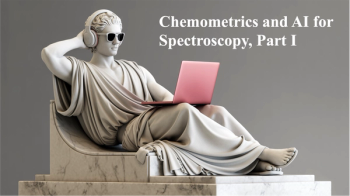
- Spectroscopy-07-01-2020
- Volume 35
- Issue 7
Atomic $pectroscopy
There is no doubt that funding for basic science in analytical atomic spectroscopy has waned over the years, and, in reality, barely exists today.
There is no doubt that funding for basic science in analytical atomic spectroscopy (AS) has waned over the years, and, in reality, barely exists today. For more than 50 years, basic-science funding sustained an entire infrastructure of analytical chemistry departments and trained thousands of students. The pioneering research of Malmstadt, Fassel, Winefordner, Hieftje, Horlick, Walters, Denton, Barnes, and Slavin, to name a few (my apologies for not naming all, if I did this entire article would be a list of our greats) pretty much wrote the book on modern day atomic spectroscopy. Studies of flames, plasmas, sparks, excitation states, chemical reactions at high temperature, non-equilibrium, heat transfer, ionization mechanisms, and so on established the foundation for tremendous advances in instrumentation; the inductively coupled plasma with both optical emission spectroscopy and mass spectrometry (ICP-OES and ICP-MS), lasers, spectrometers (mass, optical), detectors, detection limits, background correction, spectral analysis and data analytics. The Department of Defense (DOD), Department of Energy (DOE), National Science Foundation (NSF), National Institutes of Health (NIH), as well as Bell Laboratories, Lincoln Laboratories and many industries with in-house basic research contributed to the science and instrument-development programs that funded "The Glory Days" (thanks Gary Hieftje for the term). These were exciting times to research basic science that led to where we are today: global recognition of atomic spectroscopy and the availability of advanced instruments that can measure down to single atoms or ions.
Considering these achievements, it is perplexing that very little funding is available today to support basic science, and many of the analytical atomic spectroscopy university research programs are decimated. There are a few remaining government programs supporting atomic spectroscopy. The NSF Chemical Measurement and Imaging program (thanks Steve Ray for pointing this out) is one in which several atomic spectroscopy veterans and newcomers are supported. Within this program, emphasis is on "new instrumentation that enables chemical measurements likely to be of wide interest and utility to the chemistry research community." The NIH also solicits applications for the development of new or improved instrumentation for biomedical research, and "projects should propose tools that can be used by a wide range of biomedical or clinical researchers." The DOE National Nuclear Security Administration (NNSA) has done a great job of sustaining atomic spectrometry for nuclear-related measurements, and I benefited from the support this agency provided for maintaining such a strong capability at the National Laboratories.
This combined government funding today is nominal compared to the past, and the common emphasis in these remaining programs may explain the problem. Atomic spectroscopy research is viewed as instrument development, and instrument development is viewed as providing improved tools (enabling technology) for other research areas. There remain many basic science research questions that can be addressed to improve instruments, but improvements are not paradigm changes, and that is why funding amounts are nominal. In addition, I believe that we engineered ourselves out of funding with the instruments we have today, and there is not a compelling new global demand to make the instruments perform differently (not just better), that would justify a deeper basic science understanding. Companies are commercializing advanced instruments based on the 50 years of basic science in atomic spectroscopy, with diverse application for these instruments throughout society. Atomic spectroscopists are critically needed to develop methods of analysis for these instruments. A scientific instrument without a method is like a computer without an operating system. The method is critical to measuring good data, but method development is not likely to be supported under basic science, unless it is a basic science limitation to a major application.
I can think of three areas that the next generation scientists can propose to support basic science and education in atomic spectroscopy: (a) challenge the underlying science that is hindering a revolution (not evolution) in instrument performance; (b) identify critical world problems that can be addressed using atomic spectroscopy; or (c) propose esoteric ideas for new science. Funding agencies want big science, big risks, or big payoffs. A global application pull will demand funding if there are underlying basic science phenomena that need to be understood. For example, I believe that battery research still receives significant funding (although industry seems to be picking up a larger share of the research and development) because batteries are critical to society, with tremendous increasing demand for better performance. I am not aware of a similar critical global demand for advances in modern-day analytical instruments, but I welcome comments in that regard.
There is no doubt that atomic spectroscopy addresses world problems; our existence is made up of elements and isotopes. Some critical problems that can be addressed using advanced atomic spectroscopy instruments include nuclear security, environmental change, food safety, and health-essentially every aspect of society. One of our challenges is getting society to better adopt these new capabilities (instruments) that the Glory Days of atomic spectroscopy produced, to eliminate antiquated behavior and benefit from the amazing capabilities. From my direct experience, laser ablation was funded as a basic science problem for more than 35 years. Our group and many throughout the world developed advanced instruments because of a breadth of basic studies that allowed us to reproducibly apply the technology to new applications. However, many industries are content to digest solid samples in acids-an archaic approach. I believe that this is a case where implementation of available instruments to solve critical problems is not hindered by fundamental unknowns in the basic science but from resistance to change.
Applications are not a must, and new esoteric ideas with credibility that the impossible is possible should be relentlessly pursued. The laser was an esoteric idea considering there was not a critical application (maybe a potential military application), but the desire to explore a basic science challenge was overwhelming. This esoteric idea is now responsible for major advances in society-surgery, ion source for accelerators, performing atomic spectroscopy on Mars, and more. New ideas in atomic spectroscopy might involve discovering long-range correlations where spectral signatures of elements or isotopes can be measured through our eyes, or tailoring chemical bonding so that we atomically engineer a new atomic-spectral experience. How do we use artificial intelligence to make an instrument improve itself and solve an application? As I write this opinion during the COVID-19 pandemic, I wonder how (if) atomic spectroscopy could address this global problem, say by asking if there are atomic spectroscopy signatures that can be detected from a distance, like measuring temperature but only better- measuring a change in someone’s elemental chemistry related to disease. We would need to know the atomic connection to the disease, an area of interest of the NIH.
To summarize, I see the lack of funding as a temporary problem because of our success, and also as an opportunity to lay the groundwork for the next 50 years of basic science research that will lead to a 22nd century capability for atomic spectroscopy. To restart basic science funding, we need a paradigm change-not just a better instrument, but a different view of atomic spectroscopy. It’s in the hands of the next generation of scientists to think completely outside the box, and be bold in predicting what could exist. Can we address these needs with our existing atomic spectroscopy knowledge, or are basic science ideas needed to establish an entirely different approach to measuring an electrons' behavior? If we propose an esoteric idea or identify a critical need that can be addressed by atomic spectroscopy, then (I believe) funding agencies will step up to the plate. But we must articulate what advances in basic science are needed to achieve the unknown, be they fundamental understanding in atomic spectroscopy itself, or fundamental changes in the instrumentation. What are the basic science ideas that would not just sustain atomic spectroscopy, but propel it into the next century? Be bold and think outside the box.
Richard E. Russo is the founder and chairman of Applied Spectra, Inc., and was formerly a senior scientists and department head at Lawrence Berkeley National Laboratory, in Berkeley, California. Direct correspondence to
Articles in this issue
over 5 years ago
Vol 35 No 7 Spectroscopy July 2020 Regular Issue PDFover 5 years ago
Where Spectroscopy Is Headingover 5 years ago
A Further Leap of Biomedical Raman Imagingover 5 years ago
The Future of Portable Spectroscopyover 5 years ago
Light Matters . . . 35 Years of New Sources for Spectroscopyover 5 years ago
Single-Cell Analysis by ICP-MS—Current Status and Future Trendsover 5 years ago
When Size Matters: ICP-MS Detection of Small Objectsover 5 years ago
LIBS Imaging Is Entering the Clinic as a New Diagnostic ToolNewsletter
Get essential updates on the latest spectroscopy technologies, regulatory standards, and best practices—subscribe today to Spectroscopy.





